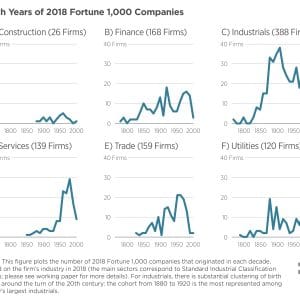WATCH VIDEO
Economic theory predicts that cutting safety net benefits will push people toward work. Manasi Deshpande’s research tells a more complicated story. The Associate Professor of Economics at the University of Chicago brings empirical clarity to a space often shaped by assumption and ideology.
“My research focuses on how we design the social safety net,” she says, “including how the social safety net interacts with labor markets, how it affects people’s incentives to work and to get educated, and how we design the safety net, taking into account all the various trade-offs involved.”
Her work on Supplemental Security Income (SSI) offers a compelling example. “A lot of our study of the social safety net has focused on work,” she explains. “But the story is more complicated than that.” In one influential paper, Deshpande examined what happens when young people are removed from SSI at age 18. “We find that…SSI does have a discouragement effect on formal work, as we would expect from kind of standard economic theory, but…the bigger effect is that it discourages criminal activity, especially people doing crime in order to generate income.”
In collaboration with a colleague at the University of Michigan, Michael Mueller-Smith, Deshpande linked administrative data with criminal justice records to reveal a stark reality: many of those who lose benefits turn to illicit activity to survive. “We see big increases in the likelihood that they do some kind of crime that’s intended to generate income. So that’s things like theft, drug distribution, prostitution, burglary.” While some individuals did increase their formal work, “the much bigger response…was that more people are doing illicit income generating activity, which we don’t want to happen.”
More recently, Deshpande has expanded her lens to examine broader dimensions of well-being. In a study using administrative data from Australia—where researchers can link safety net, tax, and health care records—she found a different kind of behavioral response: “We see big increases in the use of mental health drugs, especially antipsychotics…And what seems to be happening is that it’s helping them cope with the stress associated with income loss.” These effects were especially pronounced among young people living alone, without family support.
This kind of holistic analysis remains difficult in the US, where data linkages are more limited. “Looking at just some of the effects…can sometimes give us an incomplete picture or an inaccurate picture of what’s going on,” she says.
Deshpande’s work highlights that formal labor market outcomes alone are insufficient metrics for evaluating the efficacy of social programs. The exclusion of other behavioral responses—such as criminal activity, mental health service use, or informal support networks—risks producing incomplete or misleading conclusions. Deshpande sees particular promise in administrative data environments like Australia’s, where the integration of records enables a more comprehensive analysis of policy effects. Such linkage remains largely infeasible in US data infrastructure. As new systems evolve and cross-domain data integration becomes more feasible, her research continues to expand—asking increasingly nuanced empirical questions about how public policy structures not only economic incentives but broader dimensions of human well-being.












